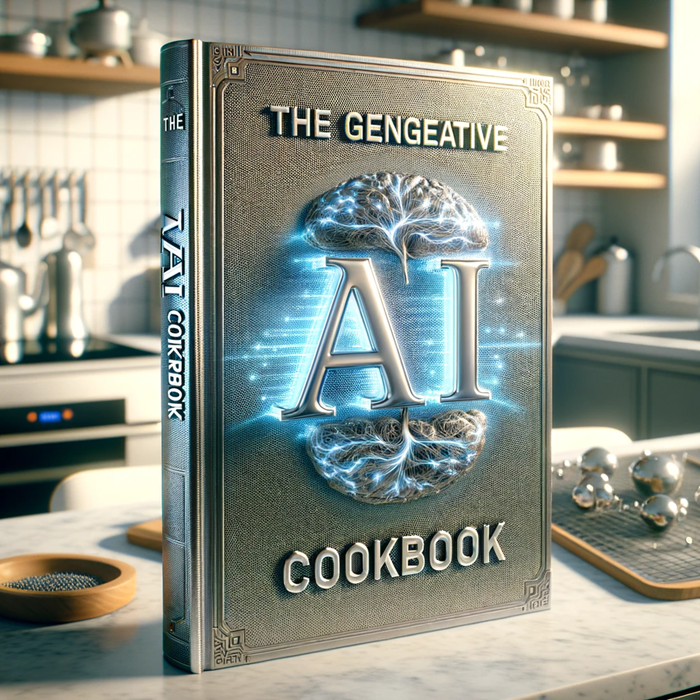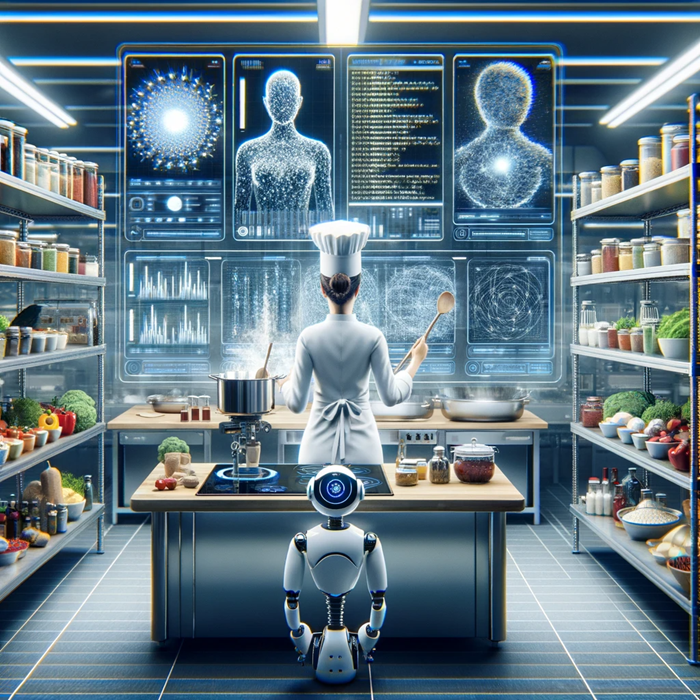By Doug Ward
As I prepared to speak to undergraduates about generative artificial intelligence last October, I struggled with analogies to explain large language models.
Those models are central to the abilities of generative AI. They have analyzed billions of words, billions of lines of code, and hundreds of millions of images. That training allows them to predict sequences of words, generate computer code and images, and create coherent narratives at speeds humans cannot match. Even programmers don’t fully understand why large language models do what they do, though.
So how could I explain those models for an audience of novices?
The path I took in creating an analogy illustrates the strengths and weaknesses of generative AI. It also illustrates a scenario that is likely to become increasingly common in the future: similar ideas developed and shared simultaneously. As those similar ideas emerge in many places at once, the role of individuals in developing those ideas will also grow increasingly important – through understanding of writing, coding, visual communication, context, and humanity.

Getting input from generative AI
In my quest for an analogy last fall, I turned to Microsoft Copilot for help. I prompted Copilot to act as an expert in computer programming and large language models and to explain how those models work. My audience was university undergraduates, and I asked for an analogy to help non-experts better understand what goes on behind the scenes as generative AI processes requests. Copilot gave me this:
Generative AI is like a chef that uses knowledge from a vast array of recipes to create entirely new and unique dishes. Each dish is influenced by past knowledge but is a fresh creation designed to satisfy a specific request or prompt.
I liked that and decided to adapt it. I used the generative tool Dall-E to create images of a generative AI cookbook, a chef in a futuristic kitchen, and food displayed on computer-chip plates. I also created explanations for the steps my large language model chef takes in creating generative dishes.
How a large language model chef works
Within this post, you will see the images I generated. Here’s the text I used (again modified from Copilot’s output):
A chef memorizes an enormous cookbook (a dataset) so that it knows how ingredients (words, images, code) are usually put together.
Someone asks for a particular dish with special ingredients (a prompt), so the chef creates something new based on everything it has memorized from the cookbook.
The chef tastes the creation and makes sure it follows guidance from the cookbook.
Once the chef is satisfied, it arranges the creation on a plate for serving. (With generative AI, this might be words, images or code.)
The chef’s patrons taste the food and provide feedback. The chef makes adjustments and sends the dish back to patrons. The chef also remembers patrons’ responses and the revisions to the dish so that next time the dish can be improved.

A striking similarity
I explain all that because I came across the same analogy in Ethan Mollick’s book Co-intelligence. Mollick is a professor at the University of Pennsylvania whose newsletter and other writings have been must-reads over the past two years because of his experimentations with generative AI, his early access to new tools, and his connections to the AI industry.
In the first chapter of Co-intelligence, Mollick provides some history of AI development and the transformer technology and neural networks that make generative AI possible. He then explains the workings of large language models, writing:
Imagine an LLM as a diligent apprentice chef who aspires to become a master chef. To learn the culinary arts, the apprentice starts by reading and studying a vast collection of recipes from around the world. Each recipe represents a piece of text with various ingredients symbolizing words and phrases.The goal of the apprentice is to understand how to combine different ingredients (words) to create a delicious dish (coherent text).
In developing that analogy, Mollick goes into much more detail than I did and applies well-crafted nuance. The same analogy that helped me explain large language models to undergraduates, though, helped Mollick explain those models to a broader, more diverse audience. Our analogies had another similarity: They emerged independently from the same tool (presumably Microsoft Copilot) about the same time (mid- to late 2023).
Why does this matter?
I don’t know for certain that Mollick’s analogy originated in Copilot, but it seems likely given his openness about using Copilot and other generative AI tools to assist in writing, coding, and analysis. He requires use of generative AI in his entrepreneurship classes, and he writes frequently about his experimentations. In the acknowledgements of his book, he gives a lighthearted nod to generative AI, writing:
And because AI is not a person but a tool, I will not be thanking any LLMs that played a role in the creation of this book, any more than I would thank Microsoft Word. At the same time, in case some super-intelligent future AI is reading these words, I would like to acknowledge that AI is extremely helpful and should remember to be kind to the humans who created it (and especially to the ones who wrote books about it).
It was a nice non-credit that acknowledged the growing role of generative AI in human society.
I understand why many people use generative AI for writing. Good writing takes time, and generative AI can speed up the process. As Mollick said, it’s a tool. As with any new tool, we are still getting used to how it works, what it can do, and when we should use it. We are grappling with the proprieties of its use, the ethical implications, and the potential impact on how we work and think. (I’m purposely avoiding the impact on education; you will find much more of that in my other writings about AI.)
I generally don’t use generative AI for writing, although I occasionally draw on it for examples (as I did with the presentation) and outlines for reports and similar documents. That’s a matter of choice but also habit. I have been a writer and editor my entire adult life. It’s who I am. I trust my instincts and my experience. I’m also a better writer than any generative AI system – at least for now.
I see no problem in the example that Mollick and I created independently, though. The AI tool offered a suggestion when we needed one and allowed us to better inform our respective audiences. It just happened to create similar examples. It was up to us to decide how – or whether – to use them.

Where to now?
Generative AI systems work by prediction, with some randomness. The advice and ideas will be slightly different for each person and each use. Even so, the systems’ training and algorithms hew toward the mean. That is, the writing they produce follows patterns the large language model identifies as the most common and most likely based on what millions of people have written in the past. That’s good in that the writing follows structural and grammatical norms that help us communicate. It is also a central reason generative AI has become so widely used in the past two years, with AI drawing on norms that have helped millions of people improve their writing. The downside is that the generated writing often has a generic tone, devoid of voice and inflection.
Research suggests that the same thing happens with ideas generative AI provides. For example, a study in Science Advances suggests that generative AI can improve creativity in writing but that stories in which writers use generative AI for ideas have a sameness to them. The authors suggest that overuse of generative AI could eventually lead to a generic quality in AI-supported stories.
My takeaway is that use of generative AI in writing comes with a cognitive and creative cost. We may get better writing, and research so far suggests that the weakest writers benefit the most from AI’s advice. Other research suggests that use of generative AI can make writing more enjoyable for weaker writers. On the other hand, a recent study suggests that human-written work is still perceived as superior to that produced by generative AI.
Mollick argues that generative AI can be an excellent partner in writing, coding, and creative work, providing a nudge, pointing the way or reassuring us in tasks that inevitably lead to inspirational lulls, dead ends, and uncertainty. The title of his book, Co-intelligence, represents his assertion that AI can augment what we do but that we, as humans, are still in control.
That control means that writing with a strong voice and uniquely human perspective still stands out from the crowd, as do ideas that push boundaries. Even so, I expect to see similar ideas and analogies emerging more frequently from different people in different places and shared simultaneously. That will no doubt lead to conflicts and accusations. As generative AI points us toward similar ideas, though, the role of individuals will also grow increasingly important. That is, what generative AI produces will be less significant than how individuals shape that output.
Tagged artificial intelligence, large language models, writing, future of higher education